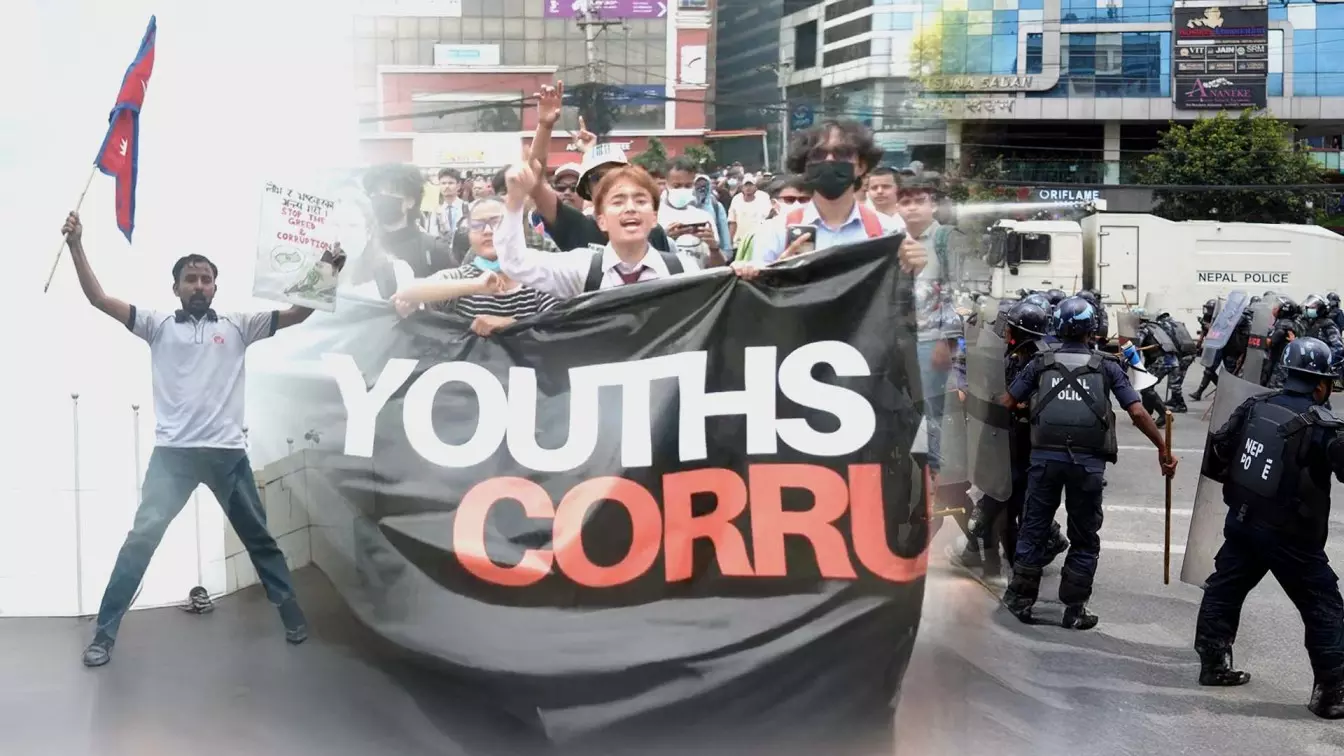
How Nepal govt's social media ban has riled up Gen Z, sparked a deadly protest
Thousands protest Oli government's ban on Facebook, Instagram, and YouTube, turning anger into the biggest youth-led uprising in years

Tens of thousands of young Nepalis flooded the streets of Kathmandu on Monday (September 8) after the KP Sharma Oli government banned 26 popular social media platforms, including Facebook, Instagram, and YouTube.
The protests, led largely by Gen Z, began as anger over the digital blackout but quickly escalated into a wider movement against corruption, authoritarianism, and lack of accountability. Demonstrators clashed with police near Parliament, leaving two people dead and around 80 injured.
With tensions spiraling, the government deployed the army and imposed a city-wide curfew until 10 pm. The unrest, which has claimed 14 lives, marks Nepal’s largest youth-led protest in recent years.
Why was the ban imposed?
According to the government, the ban was imposed because the platforms failed to register with the Ministry of Communications and Information Technology. Officials framed the move as a matter of regulatory compliance.
However, protesters saw it as censorship and a deliberate attempt to silence critical voices and stifle dissent. This perception fueled anger among young Nepalis, who view online platforms as essential spaces for free expression.
Also read: Nepal protests leave 14 dead: Why has Gen Z taken to the streets in revolt?
Nepal Prime Minister Oli defended the government’s decision, saying, “Any attempt to undermine the nation can never be tolerated. The independence of the nation is greater than the loss of jobs of a handful of individuals. How can it be acceptable to defy the law, disregard the constitution, and disrespect national dignity, independence, and sovereignty?”
Global tech firms stay away
A ministry notice had given social media companies seven days from August 28 to register, in line with a Supreme Court order issued in September last year. But by the deadline, none of the major platforms—including Meta (Facebook, Instagram, WhatsApp), Alphabet (YouTube), X (formerly Twitter), Reddit, and LinkedIn—had submitted applications.
This is not the first time Nepal has moved against digital platforms. In July, the government blocked Telegram citing concerns about online fraud and money laundering. Earlier, in August 2024, it lifted a nine-month ban on TikTok after the company agreed to follow Nepali regulations.
Larger struggle unfolds
As night fell on Kathmandu, the protests took on a larger meaning beyond access to apps. For a generation raised online, the movement is now about freedom, accountability, and the future of Nepal’s democracy.
Also read: Nepal: Army deployed, curfew imposed as Gen Z protests turn deadly
The streets of the capital echo a question that remains unanswered: will the government heed the demands of its youth, or will the voices of dissent continue to grow louder?
The content above has been transcribed using a fine-tuned AI model. To ensure accuracy, quality, and editorial integrity, we employ a Human-In-The-Loop (HITL) process. While AI assists in creating the initial draft, our experienced editorial team carefully reviews, edits, and refines the content before publication. At The Federal, we combine the efficiency of AI with the expertise of human editors to deliver reliable and insightful journalism.

